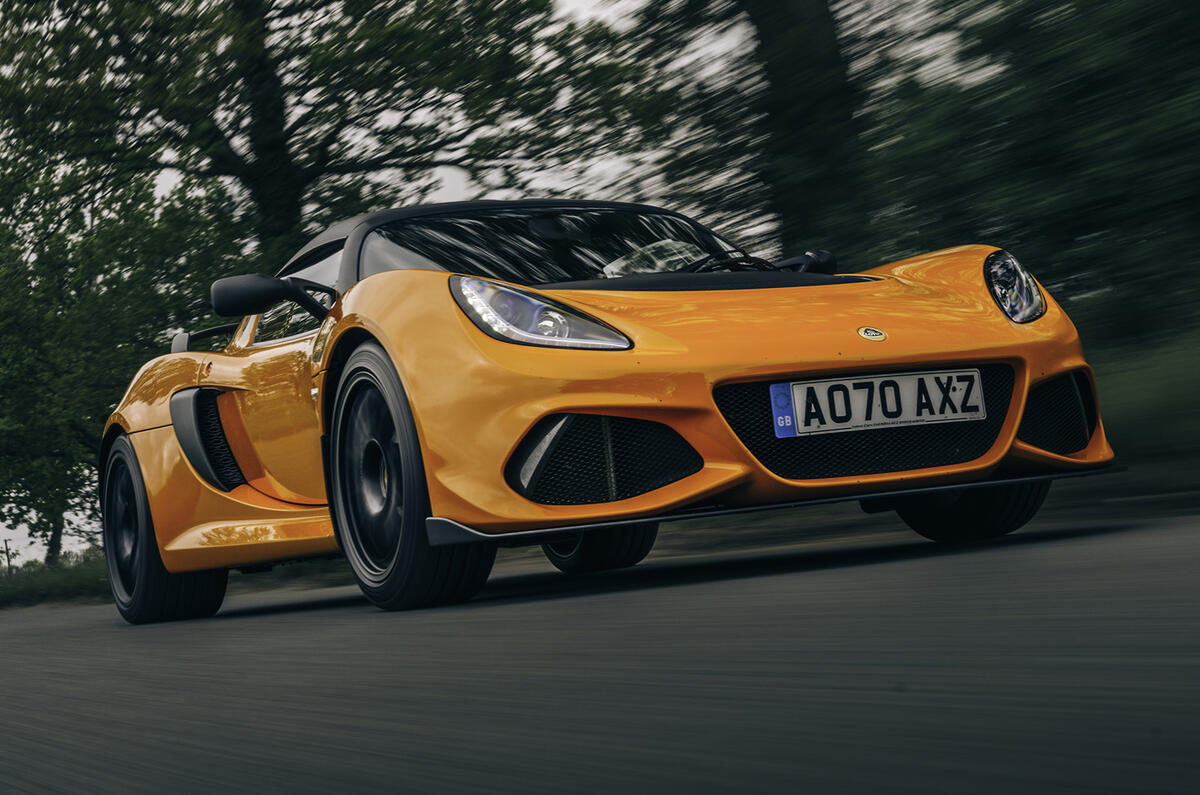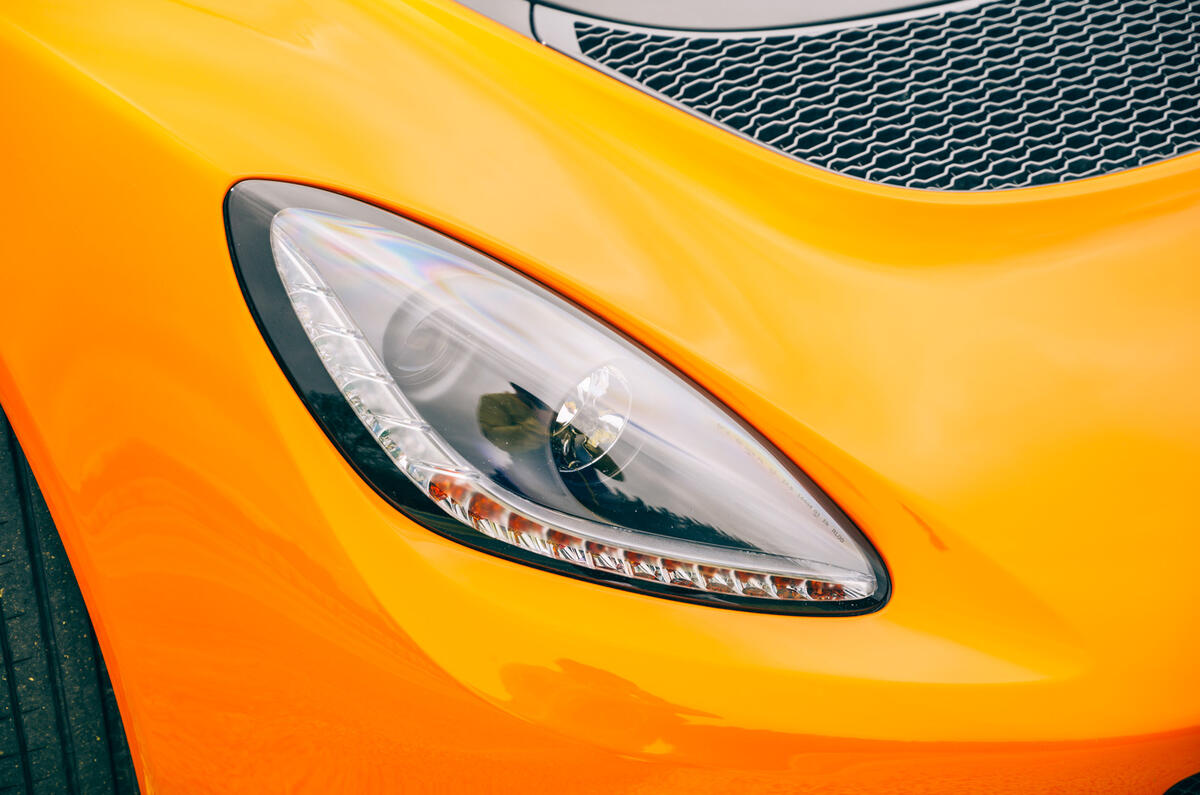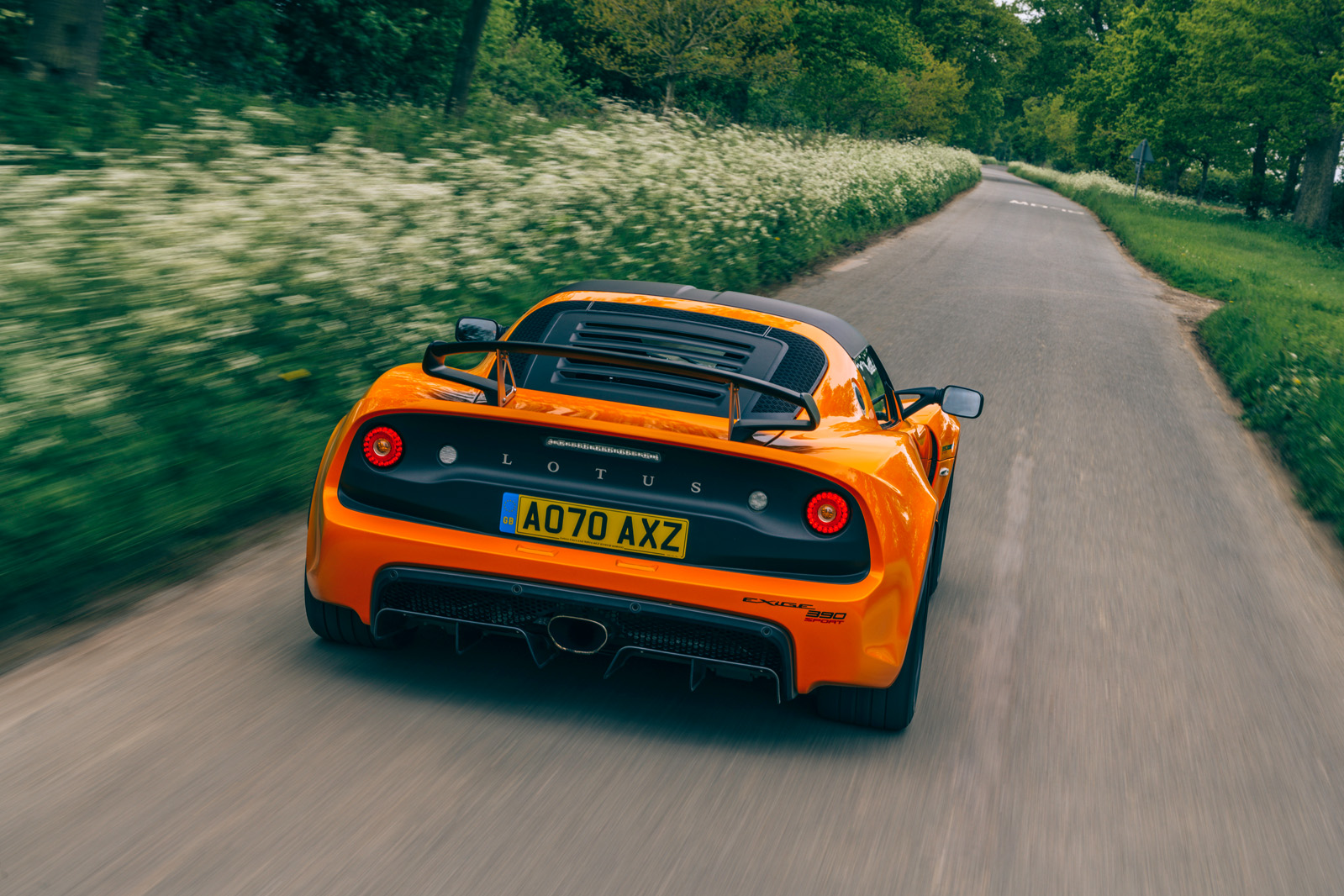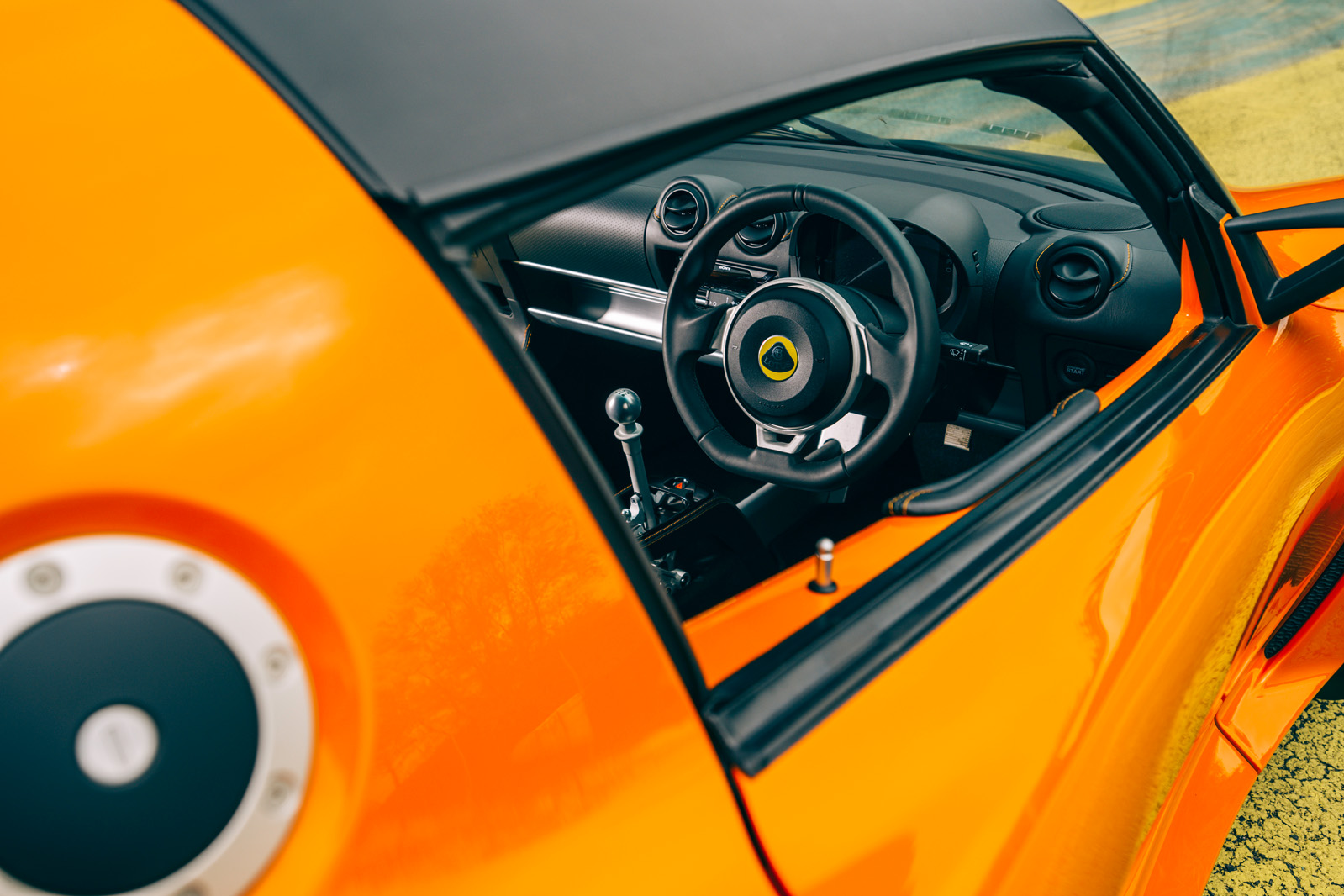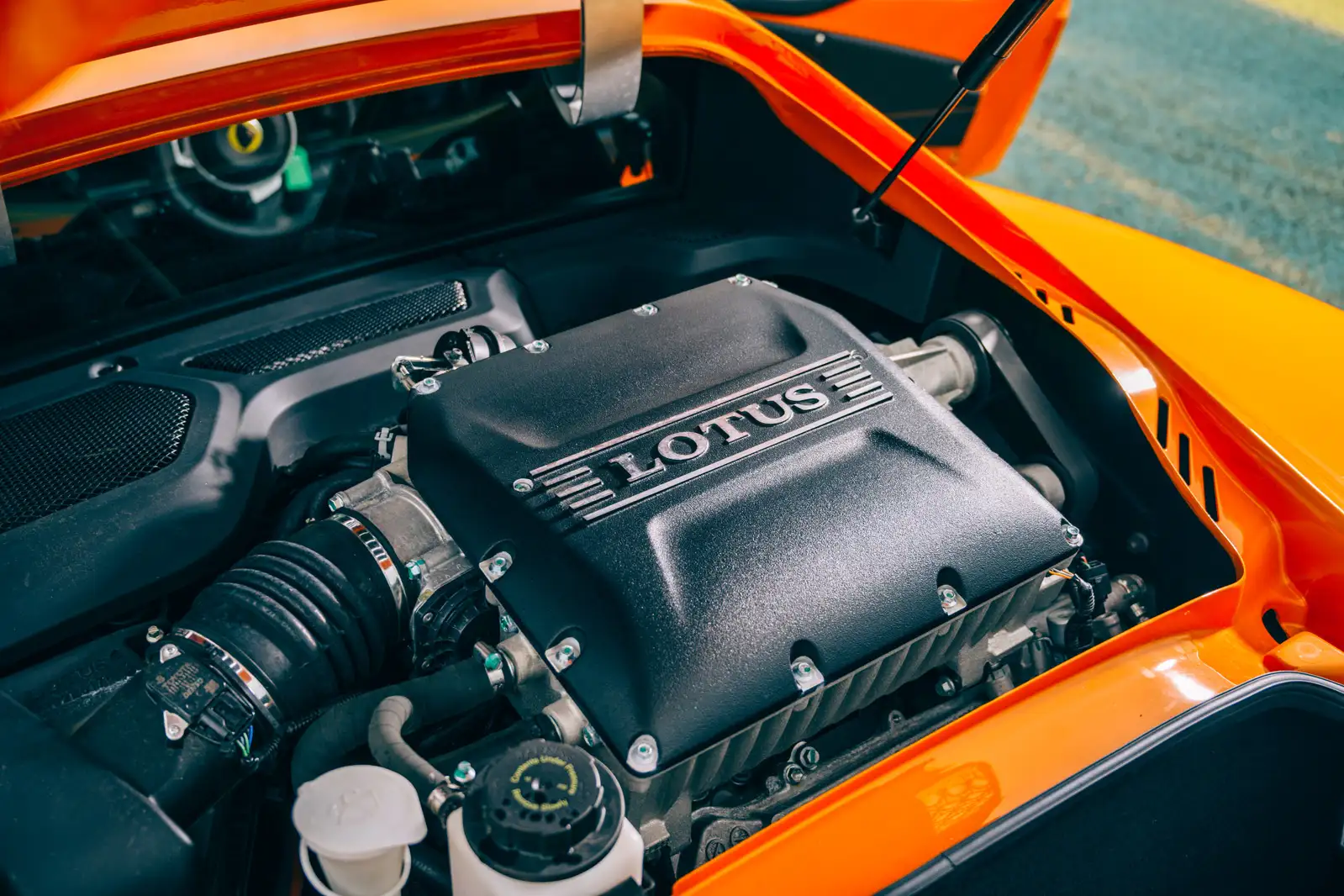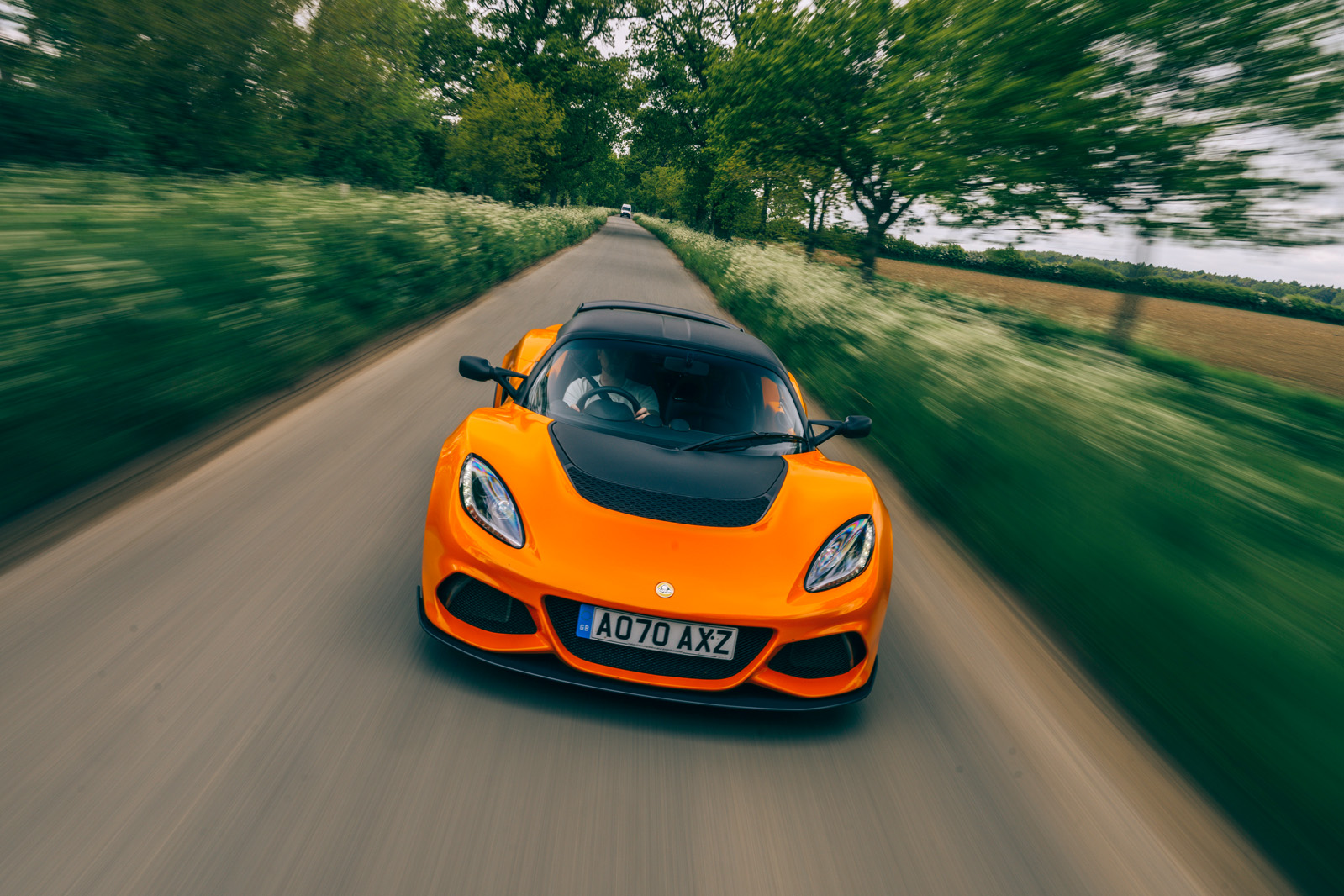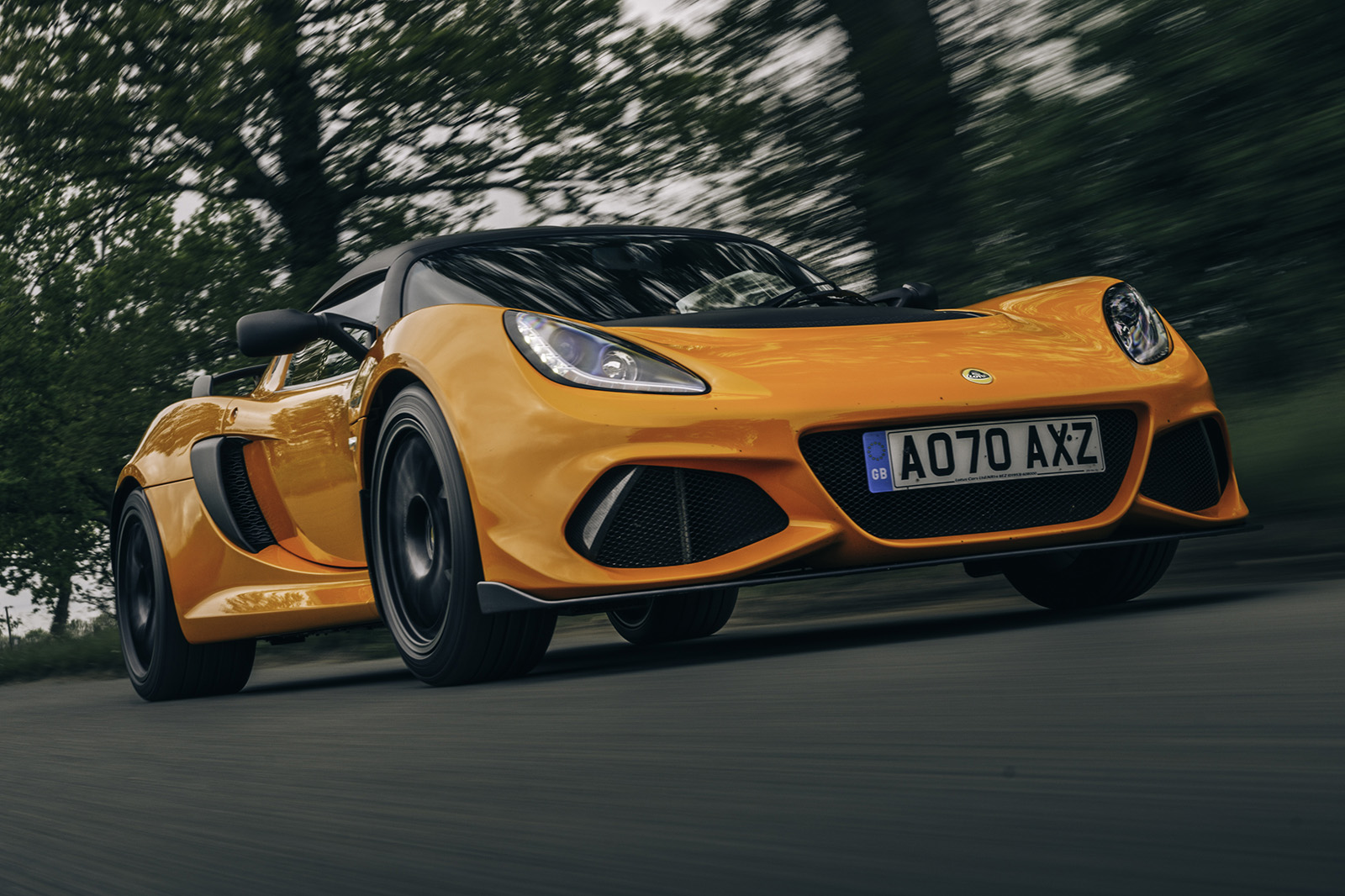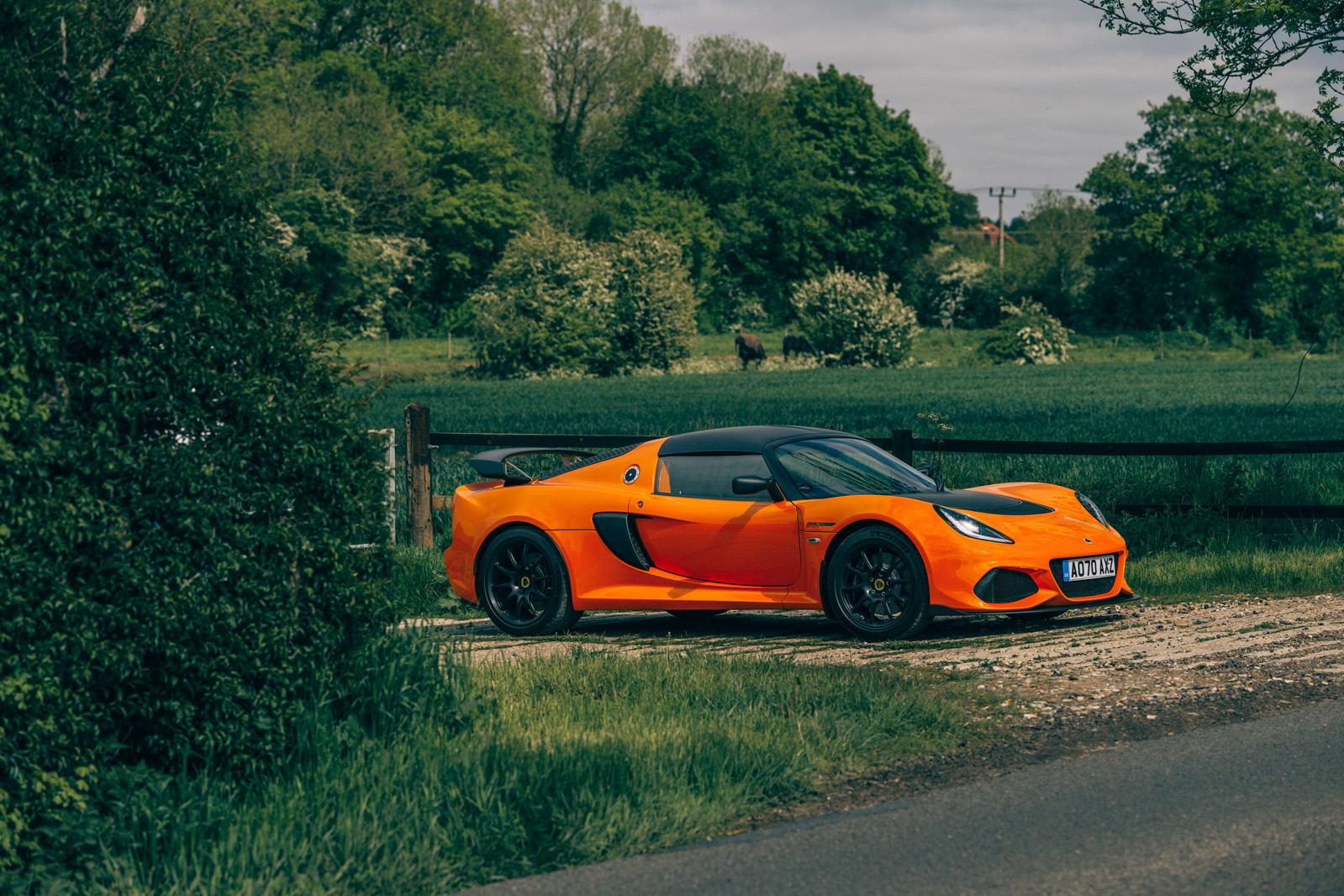Push hard and you’ll find the Exige plays its heightened feedback levels off against benign handling. There is plenty of front-end grip, even on relatively ordinary Michelin Pilot 4 tyres, but through low- and high-speed corners, the first sign you get that the V6 or the conditions are winning the battle against the chassis is gentle understeer. You can bring the nose back onto line with a delicate lift of the throttle, and push it wider again with more power. It’s all so subtle, engaging and, if you’ll allow us the hyperbole, magical. For sheer tactility and accuracy, look no further than the Exige, even in 2021.
Without the semi-slick tyres and added downforce of its steroidal siblings, the Sport 390 was never going to slay giants at MIRA. Its time – just over 1min 12sec – was a good two seconds slower than that of the 600kg-heavier BMW M4 Competition recently tested. But really, who cares about ultimate lap times when the car feels this sweet to drive at full flow?
The Exige is remarkably good at avoiding brake fade and overheating its tyres, so you can enjoy the delicacy of its adjustability for lap after lap. In Race mode, or with the electronic systems off, it can require some taming, but never does the experience become nerve-racking because the chassis is so well balanced. Bigger slip angles cause the steering to weight up in a fashion that could catch you out if you’re not expecting it, though.
The only disappointment is the slight imprecision of the gearshift mechanism when you’re really flying, but as a home-to-track-and-back-again car, this remains among the very finest ever made.
Comfort and isolation
It’s unlikely anyone will use their Exige Sport 390 daily, so here’s a more plausible scenario: an 80-mile trip from your home to a circuit, then back again, all in one day. How would the Lotus treat you in terms of comfort and isolation?
Sliding (well, dropping and swivelling before folding yourself) aboard remains an unpleasant experience, but once inside, the driving position is mostly excellent and the seats are more supportive than they look. On a cruise along the motorway, then, noise would be your the main problem.
Below 4500rpm, the exhaust system is demure, but with so little protection from noise, vibration and harshness and with that stiff chassis, road roar levels are serious at a cruise. At 70mph, the 390 Sport registered 78dBA on our microphones – 7dBA louder than an A110, 5dBA louder than an M4 Competition and, yes, louder than a Lamborghini Aventador SVJ, albeit by only 1dBA.
Thankfully, although cacophonous (additional sound insulation is available for an extra £400), the Lotus doesn’t physically labour motorway surfaces, so beyond the steering patter that’s a hallmark of the Exige driving experience, the car isn’t unreasonably tiring to drive over long distances.
However, on the way home, after three or four hours in the saddle, you’d rue the lack of lumbar support or adjustability in the Exige’s chairs, and the closeness of the cabin might begin to irk. Any last-mile trundling and parking might also irritate because the unassisted steering is heavy at low speed.
Ultimately, though, you’ll have enjoyed a day out in one of the rawest driving machines around, while staying dry and having the ability to call ahead hands-free and find out what’s for dinner. Of course, once home, you’ll have to unfurl yourself from the cabin.


